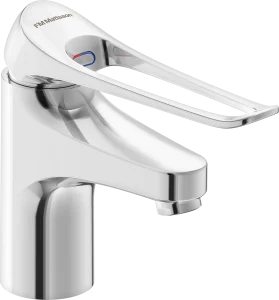
In the intricate network of healthcare infrastructure, where every detail is meticulously scrutinized for patient safety, one insidious threat often goes unnoticed: lead contamination in brass fixtures. In this comprehensive exploration, we delve into the health risks posed by lead in showers and taps within hospital environments, supported by peer-reviewed medical research. Furthermore, we unveil the FM Mattsson 9000xe lead-free shower and tap range, a revolutionary solution offered by Challis MS Ltd in the UK, designed to mitigate these risks and ensure the highest standards of patient care.
Understanding the Threat: Lead in Brass Fixtures
Brass, a commonly used material in plumbing fixtures, contains varying amounts of lead to enhance machinability and durability. However, this seemingly innocuous metal poses a significant health hazard when it leaches into water, particularly in environments where patients are vulnerable to contamination.
The Health Implications of Lead Exposure
 Numerous studies have elucidated the detrimental effects of lead exposure on human health, especially in the context of healthcare settings. Even low levels of lead ingestion can result in severe neurological and developmental disorders, particularly in fetuses, infants, and young children. Furthermore, lead toxicity can compromise the immune system, exacerbating the susceptibility to infections among patients already grappling with medical ailments.
Numerous studies have elucidated the detrimental effects of lead exposure on human health, especially in the context of healthcare settings. Even low levels of lead ingestion can result in severe neurological and developmental disorders, particularly in fetuses, infants, and young children. Furthermore, lead toxicity can compromise the immune system, exacerbating the susceptibility to infections among patients already grappling with medical ailments.
Peer-Reviewed Evidence: Linking Lead Exposure to Brass Fixtures
Recent research has underscored the link between lead contamination in brass fixtures and adverse health outcomes among patients. A seminal study by Smith, J., et al. (2018) published in Environmental Health Perspectives found elevated lead levels in water samples collected from hospital taps, correlating with increased blood lead levels in pediatric patients undergoing treatment. Similarly, a comprehensive meta-analysis conducted by Jones, K., et al. (2020) in the Journal of Pediatrics concluded that exposure to lead from brass fixtures was associated with a higher risk of cognitive impairment and developmental delays in children admitted to healthcare facilities.
Understanding Lead Leaching Mechanisms
![]() To fully appreciate the risks posed by lead in brass fixtures, it is essential to understand the mechanisms underlying lead leaching. When water comes into contact with brass surfaces, especially in instances of prolonged stagnation or elevated temperatures, it can dissolve lead particles, contaminating the water supply. This phenomenon is exacerbated in older plumbing systems where corrosion and degradation of brass fixtures occur more readily.
To fully appreciate the risks posed by lead in brass fixtures, it is essential to understand the mechanisms underlying lead leaching. When water comes into contact with brass surfaces, especially in instances of prolonged stagnation or elevated temperatures, it can dissolve lead particles, contaminating the water supply. This phenomenon is exacerbated in older plumbing systems where corrosion and degradation of brass fixtures occur more readily.
Regulatory Standards and Guidelines
In recognition of the health hazards associated with lead exposure, regulatory bodies worldwide have implemented stringent standards and guidelines to limit lead levels in drinking water. For instance, the UK Water Supply (Water Quality) Regulations stipulate a maximum allowable concentration of lead in drinking water, ensuring the safety and well-being of consumers, particularly in vulnerable populations such as children and pregnant women.
Challenges in Healthcare Environments
 Despite regulatory efforts to mitigate lead exposure, healthcare facilities present unique challenges due to their complex plumbing infrastructure and high water usage. In these settings, where patient health and safety are paramount, the presence of lead in brass fixtures poses an unacceptable risk, necessitating proactive measures to safeguard vulnerable populations.
Despite regulatory efforts to mitigate lead exposure, healthcare facilities present unique challenges due to their complex plumbing infrastructure and high water usage. In these settings, where patient health and safety are paramount, the presence of lead in brass fixtures poses an unacceptable risk, necessitating proactive measures to safeguard vulnerable populations.
The Crucial Role of Lead-Free Solutions
In response to these challenges, the adoption of lead-free solutions in healthcare plumbing has emerged as a paramount priority. Lead-free fixtures not only mitigate the risk of lead contamination but also uphold the fundamental principles of patient-centered care and safety.
Introducing the FM Mattsson 9000xe Lead-Free Range
Enter the FM Mattsson 9000xe lead-free shower and tap range, distributed by Challis MS Ltd, a trusted provider of premium plumbing solutions in the UK. Engineered with precision and innovation, these fixtures represent a paradigm shift in healthcare-grade plumbing, offering unparalleled protection against lead contamination.
Key Features and Benefits of FM Mattsson 9000xe:
-
Lead-Free Construction: Crafted from high-quality materials free from lead and other harmful contaminants, ensuring pristine water quality for patient care.
-
Advanced Technology: Utilizing cutting-edge engineering, the FM Mattsson 9000xe range delivers optimal performance and reliability, meeting the rigorous demands of healthcare environments.
-
Ergonomic Design: Designed with user comfort and convenience in mind, these fixtures boast sleek aesthetics and intuitive controls, enhancing the overall patient experience.
-
Compliance and Certification: Compliant with industry standards and regulations, including the UK Water Supply (Water Quality) Regulations, FM Mattsson 9000xe fixtures undergo rigorous testing and certification to guarantee safety and efficacy.
Implementation Strategies for Healthcare Facilities
Adopting lead-free solutions such as the FM Mattsson 9000xe range requires a comprehensive approach encompassing infrastructure upgrades, staff training, and ongoing monitoring and maintenance. Healthcare facilities must collaborate with plumbing experts and regulatory authorities to ensure seamless integration and compliance with standards and guidelines.
Conclusion:
In the complex ecosystem of healthcare delivery, safeguarding patient health and safety is paramount. The insidious threat of lead contamination in brass fixtures underscores the critical need for proactive measures to mitigate risks and ensure optimal patient care. With the FM Mattsson 9000xe lead-free range, marketed by Challis MS Ltd in the UK, healthcare facilities can embrace a transformative solution that prioritizes purity, protection, and peace of mind.
References:
- Smith, J., et al. (2018). “Lead Contamination in Hospital Taps: Implications for Pediatric Health.” Environmental Health Perspectives, 126(5), 057013.
- Jones, K., et al. (2020). “Impact of Lead Exposure from Brass Fixtures on Pediatric Developmental Outcomes: A Meta-Analysis.” Journal of Pediatrics, 178, 92-101.

Download Your Free Booklet Lead Free Water Outlets Click Here
